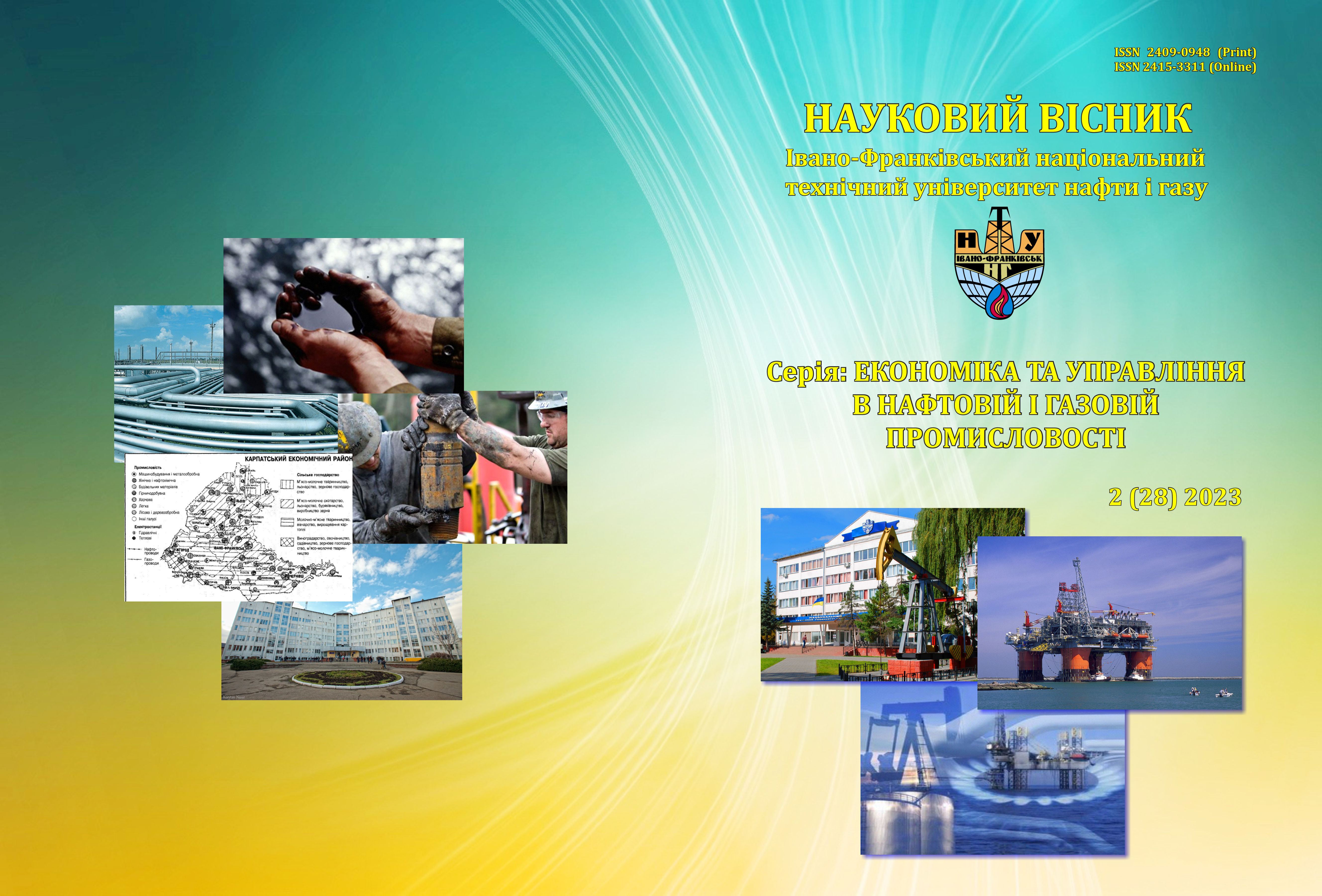MANAGEMENT OF ENTERPRISES ON THE BASIS PROCESS APPROACH
DOI:
https://doi.org/10.31471/2409-0948-2023-2(28)-133-142Keywords:
business process, process approach, classification of business processes, management, competitiveness, modernization, logistics, enterprise.Abstract
The article is devoted to highlighting the role of optimization of business processes of the enterprise. The essence and significance of the business processes of the enterprise, in particular the construction one, as a tool for increasing the efficiency of its activity, were studied, the peculiarities of the introduction of the process approach were analyzed, taking into account the specifics of enterprises in the construction industry. Based on the systematization of the main interpretations of the concept of the business process, the article defined the essence of the business process as a sequence of actions aimed at achieving the goal within the framework of the general mission of the enterprise - the provision of quality services (production of products) to ensure a continuous current production process, which involves the management of flows on inputs and outputs, has a responsible executor and an economically measured result in conditions of uncertainty of the external environment and limited resources. It is justified that for effective process management, significant attention is paid to the optimization of business processes that ensure the activity of construction enterprises and are carried out with the aim of timely supply of
material, financial, and informational resources at the input of the main processes and timely delivery of the newly created value of the product or service to the final consumer at the output. Application of the process approach and optimization of business processes have several advantages for enterprise management. They help to understand the full context and logic of actions of all interconnected processes, improve coordination and communication between departments and employees, reduce the time of tasks and increase the quality of products or services. In addition, the process approach and optimization of business processes contribute to continuous improvement, which allows the enterprise to be competitive in a constantly changing market environment.
Based on a retrospective analysis, it was concluded that logistics and wide application of logistics management methods are used to solve similar problems. Since logistics management itself is crucial for the coordination of business processes taking place at the enterprise.
Prospects for further research in this scientific direction are the development of a mechanism for assessing the business processes of a business entity, taking into account the specifics of its activity.
References
Plebani, P., Marrella, A., Mecella, M., Mizmizi, M., & Pernici, B. (2017). Multi-party business process resilience by-design: A data-centric perspective doi:10.1007/978-3-319-59536-8_8
Nam, D., Lee, J., & Lee, H. (2019). Business analytics adoption process: An innovation diffusion perspective. International Journal of Information Management, 49, 411-423. doi:10.1016/j.ijinfomgt.2019.07.017
Marrella, A., Mecella, M., Pernici, B., & Plebani, P. (2019). A design-time data-centric maturity model for assessing resilience in multi-party business processes. Information Systems, 86, 62-78. doi:10.1016/j.is.2018.11.002
Чорнобай Л.І. (2013). Бізнес-процеси підприємства: загальна характеристика та економічна суть. Вісник Національного університету «Львівська політехніка». Менеджмент та підприємництво в Україні: етапи становлення і проблеми розвитку. № 769. С. 125-131.
Сток Дж.Р, Ламберт Д.М. (2007). Стратегическое управление логистикой: Пер с 4 – го англ. Изд.. М.: ИНФРА - М., 797.с.
Гойко А.Ф., Скакун В.А. (2008). Стратегічне управління логістичними бізнес-процесами будівельних підприємств: пріоритетні задачі та шляхи їх вирішення: Науково-технічний збірник. №87. С.172–178.
Cherchata, A., Popovychenko, I., Andrusiv, U., Gryn, V., Shevchenko, N., & Shkuropatskyi, O. (2022). Innovations in Logistics Management as a Direction for Improving the Logistics Activities of Enterprises. Management Systems in Production Engineering, 30(1), 9-17.
Andrusiv U.Y., Cherchata А. О. (2018). Reengineering of business-processes of enterprise as an instrument of their improvement and development. Problems of modern science: Collection of scientific articles. Fadette editions, Namur, Belgium, 59-63 p.
Денисенко М.П., Левковець П.Р., Михайлова Л.І. (2010). Організація та проектування логістичних систем: підручник / за ред. проф. М.П. Денисенка, проф. П.Р. Лековця, проф. Л.І. Михайлової. К.: Цент учбової літератури. 336 с.
Бойчук Н.Я. (2016). Оптимізація управління бізнес-процесами на підприємствах України. Збірник наукових праць Національного технічного університету України Випуск 17. С. 173-180.
Оптимізація бізнес-процесу для глобальної конкуренції [Електронний ресурс]. Режим доступу : http://www.managment.com.ua/cm/cm036.html
Andrusiv, U. Y., Mazur, I. M., & Kinash, I. P. (2016). Systematic approach to the formation of management mechanism of construction enterprises innovation activity. Economic Processes Management: International Scientific E-Journal , 4, Retrieved from: http://epm.fem.sumdu.edu.ua/download/2016_4/epm2016_4_2.pdf
Гвоздь М.Я., Мицько В.І.(2014). Проблеми та переваги використання процесного підходу до управління машинобудівними підприємствами. Вісник Національного університету «Львівська політехніка». Логістика. № 811. С. 56–62.
Кузьмін О.Є., Мельник О.Г. (2003) Теоретичні та прикладні засади менеджменту: Навчальний посібник. 2-е вид. доп. І перероб. Львів: Національний університет “Львівська політехніка”, “Інтелект-Захід”,. С. 352.
Downloads
Published
How to Cite
Issue
Section
License
Copyright and Licensing Terms
Copyright Statement
The authors who publish in the journal accept the following conditions:
- The authors retain the copyright and grant the journal the right of first publication, licensed with Creative CommonsCC BY-NC-SA , which permits other people to remix, transform, and build upon the material and use the material for non-commercial purposes, give appropriate credit and distribute the contributions under the same license as the original.
- The authors can conclude additional agreements on the non-exclusive distribution of the journal’s published version of the work (for example, publication of the work in electronic repositories) with an acknowledgment of its initial publication in this journal.
- The authors can upload the published articles on the Internet (for example, in electronic repositories or on web-sites), as it will stimulate fruitful scholarly discussions and increase the citation rates of the published articles.


1.png)


1.png)





